Project Overview


Gym Buddy is a fitness coaching service for everyone, designed to help people who are new to technology to enjoy this experience without having a hard time using our service on different devices. Many users don’t feel comfortable going to a gym and prefer working out in a place like their home. If these users don’t have experience with fitness, they will need a coaching service to help them.
I want to create a fitness coaching tool accessible to everyone and ease this experience for users who don’t have much experience with technology. All users should enjoy taking advantage of new technologies without feeling lost while using them.
With the advance of new technologies, it is difficult for some users to keep up with these developments. They cannot enjoy the benefits of websites, and mobile and tablet apps, because they are not comfortable with them. Lately, it is popular to exercise at home, but it is also necessary to have some guidance through the process.
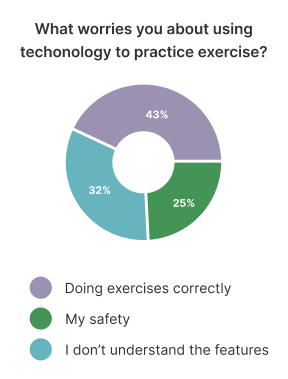



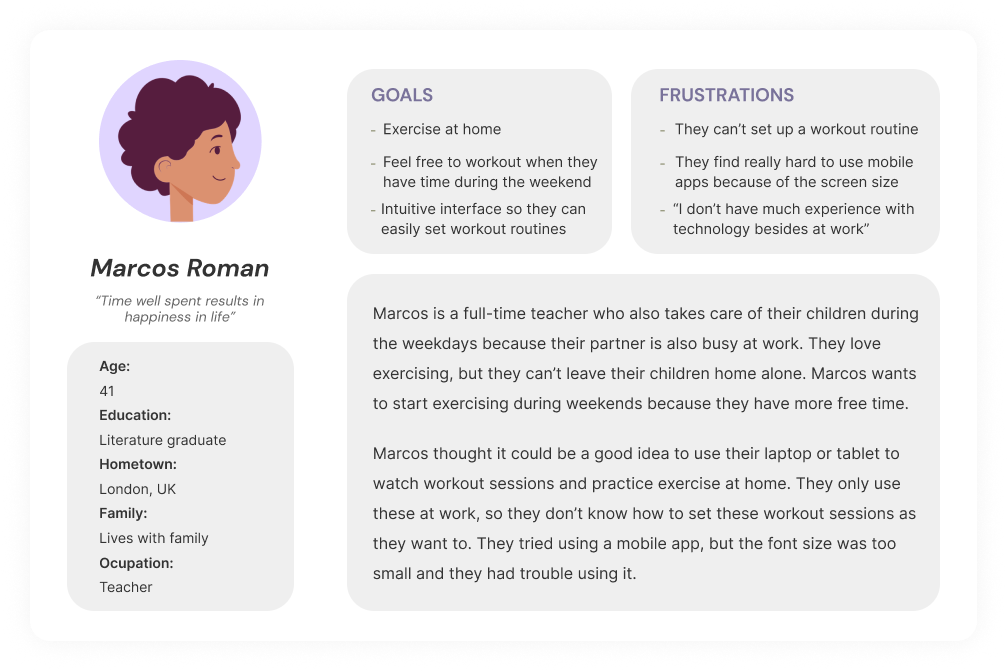
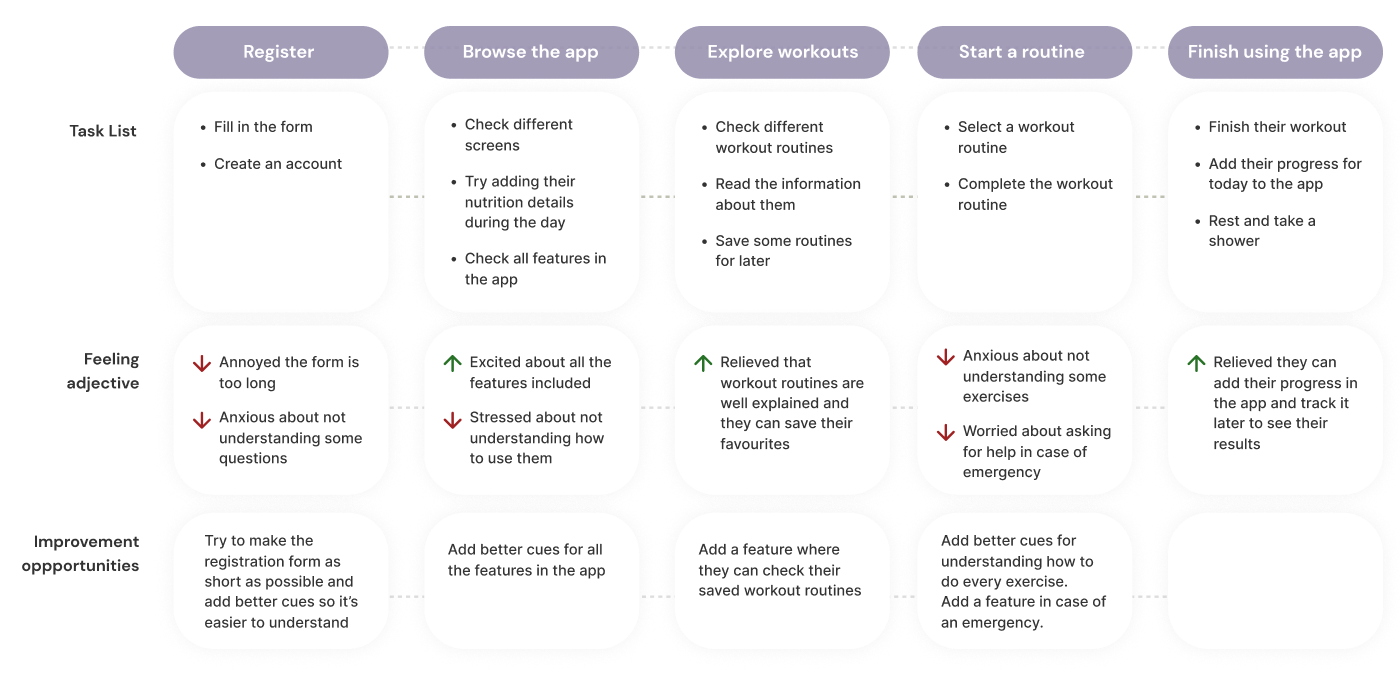
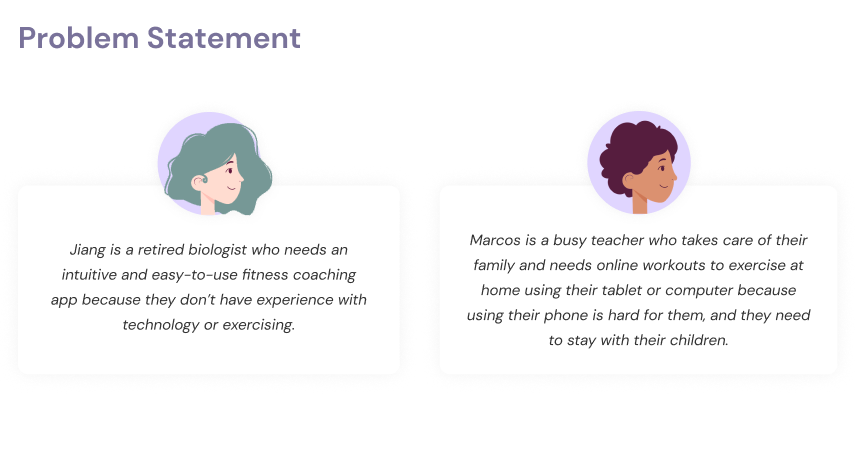

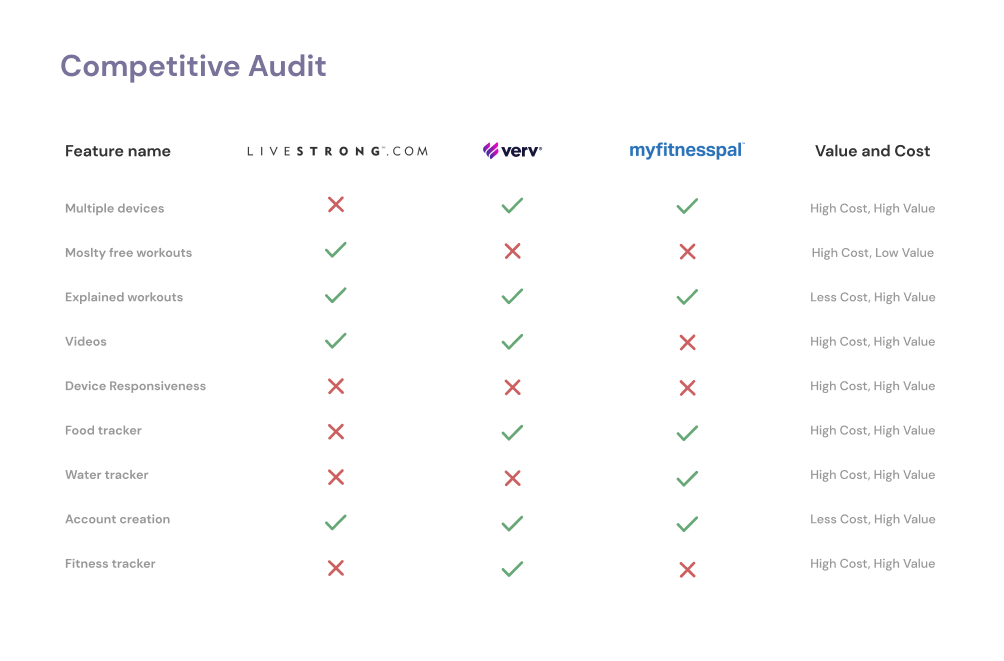

The first step in the design phase was sketching paper wireframes for each screen in our mobile app and trying different ideas. I drew stars to mark the elements of each sketch I liked the most and probably will appear in the initial digital wireframes.
Because many users complained about having trouble using their phones, I started to work on designs for bigger screen sizes. The app and website must be fully responsive so users can use them on different devices.I decided to design the Tablet Version on Landscape since most users usually watch videos and use these apps in this position. I designed an additional screen for the Desktop version so users can easily download the app.

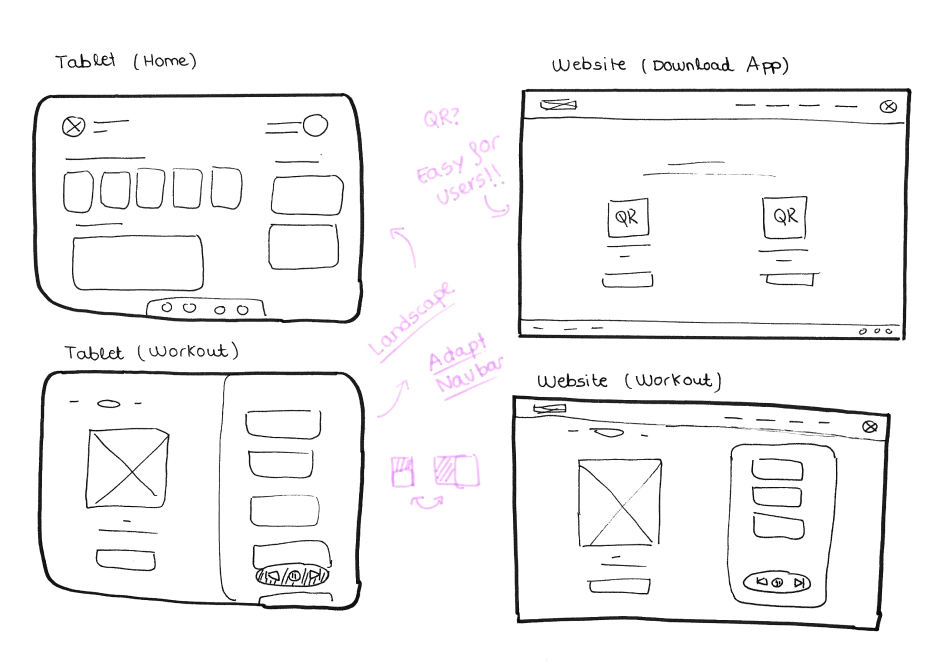


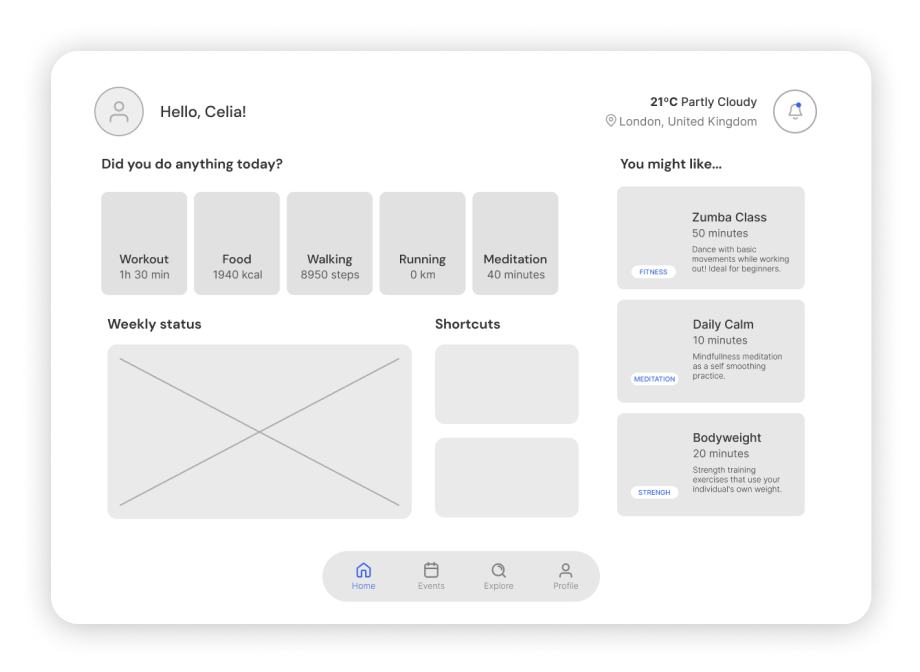
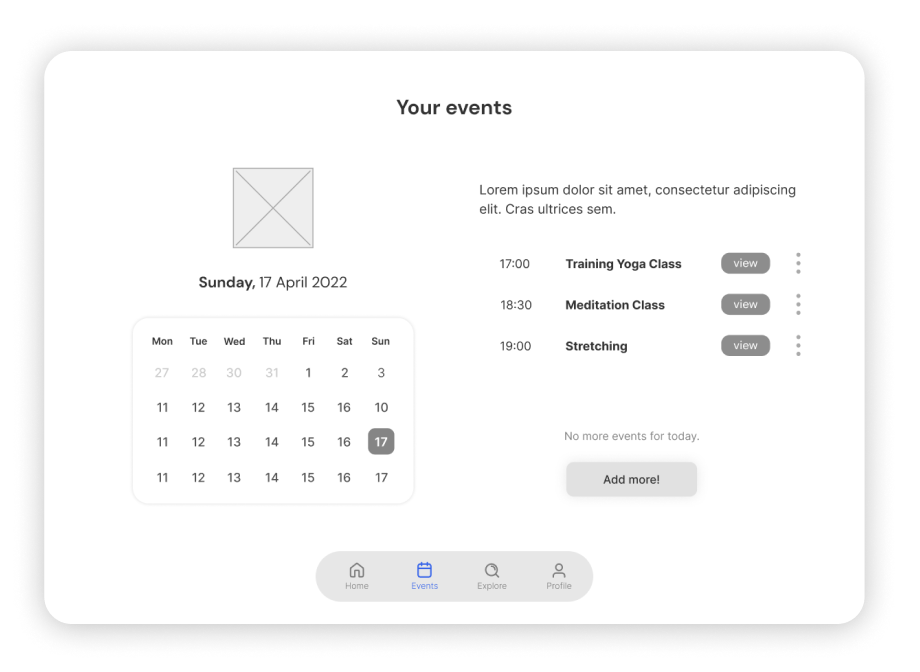
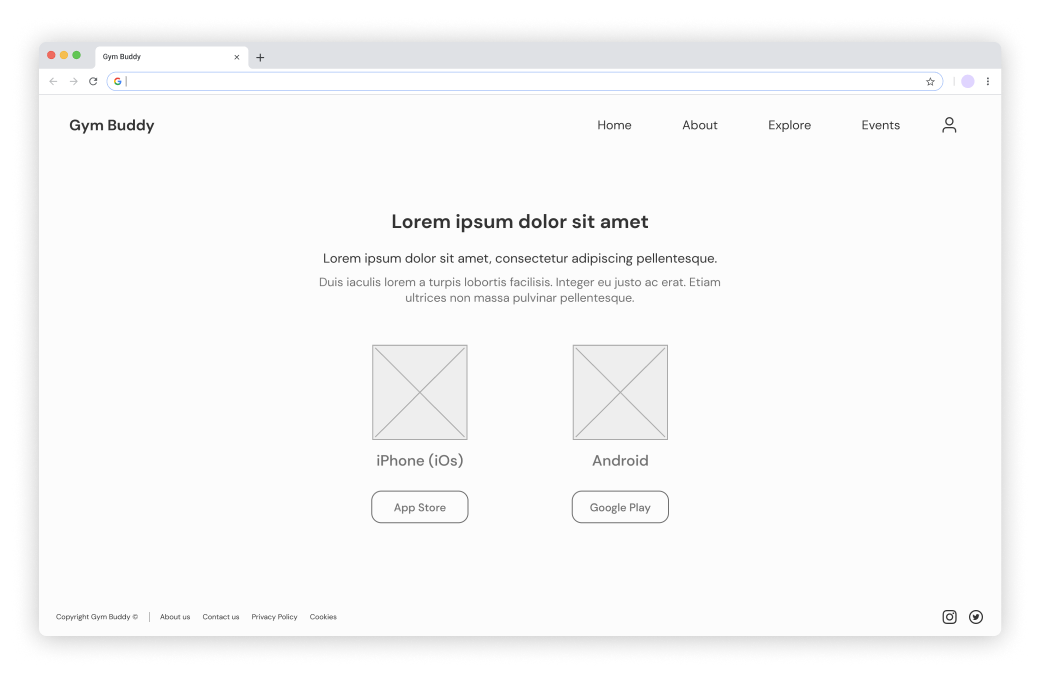

I connected all of the screens involved in the primary user flow to create my low-fidelity prototype. The primary user flow consisted of creating an account, browsing the app and checking a workout routine. Users tested this prototype in a usability study. I created my UX Research Plan and conducted an unmoderated usability study to help me improve my designs.



1. Based on the theme that: some users asked for a screen where they can check their saved or liked workouts, an insight is: users need a screen where they can find their saved and liked workout routines.
2. Based on the theme that: some users don’t feel comfortable sharing their gender, an insight is: users need a solution so it is an option not sharing their gender if they are not comfortable with it.
1. Based on the theme that: some users have trouble understanding some parts in the registration form, an insight is: users need better cues during the registration process to ease the user experience.
2. Based on the theme that: almost all users were confused about water measurement, an insight is: users need better cues for adding water in the water intake feature.
1. Based on the theme that: some users don’t understand the “My Profile” screen, an insight is: users need better and more useful features in “my profile” screen.
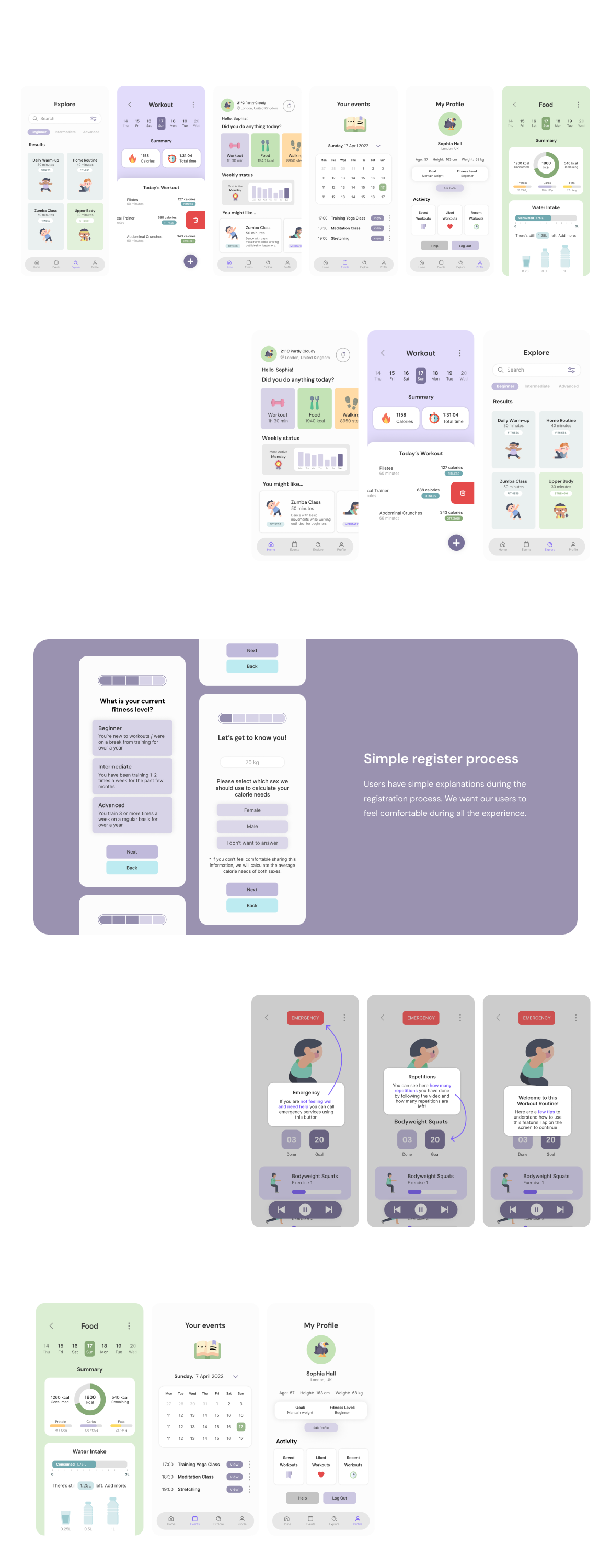
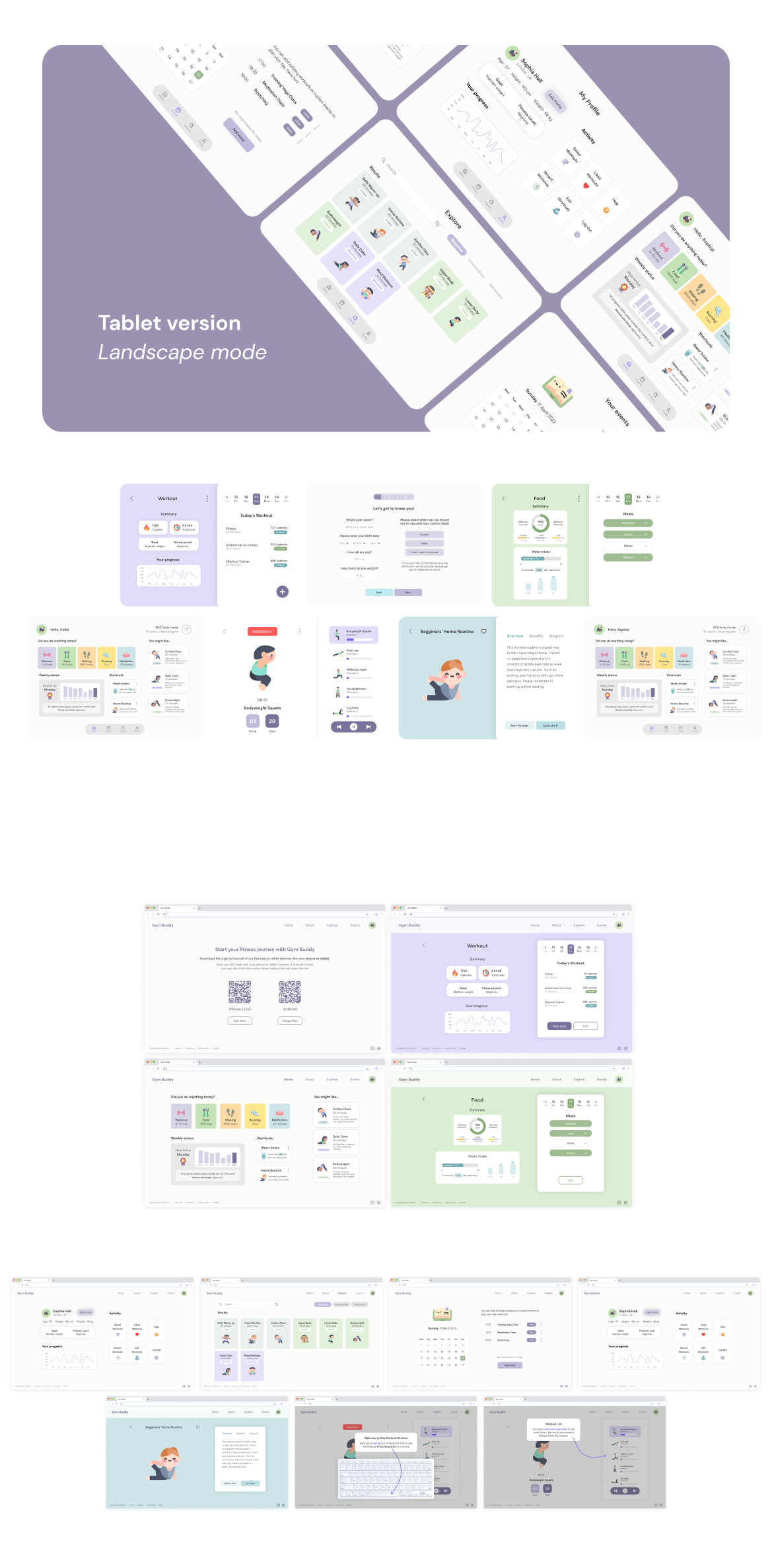
I connected all of the screens involved in the primary user flow to create my high-fidelity prototype. The primary user flow consisted of:
- Create an account
- Check our workout tracker feature
- Remove an exercise from the workout tracker feature
- Check our food feature
- Add a glass of water to the water tracker
- Add a meal to the food tracker
- Browse our app and check the different screens
- Check a workout routine from the “Explore” screen
- Start a workout routine
- Go back to the “Explore” screen
View mobile phone high-fidelity prototype
Gym Buddy is accessible to every user and is available on different devices. Users can download our app on their mobile phone and tablet. If they don’t feel comfortable with these screen sizes, users can also use our website version. Gym Buddy offers the same experience and features on every device. I connected all of the screens involved in the primary user flow to create my high-fidelity prototype for the desktop version. Since users already experienced some of the features like Workout, Food, and Water tracking, we decided to simplify the primary user flow for the website desktop version. The primary user flow consisted of:
- Check how to download our app
- Create an account
- Browse our website and check the different screens
- Check a workout routine from the “Explore” screen
- Start a workout routine
- Go back to the “Explore” screen

It was my first time working on a project on multiple devices, but with the right amount of research, I was able to overcome this challenge. User feedback was key to success in my goal to ease user experience for people who are new to technology. I feel fulfilled that I created an app that helps users to have a friendly experience with technology rather than an overwhelming one.
Collect more feedback and explore use cases that will help me to improve my design. Validate all the pain points users experienced have been solved and determine if there are any new pain points to be addressed.